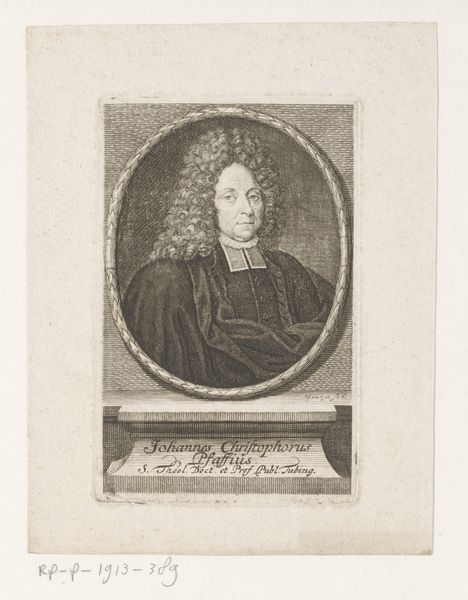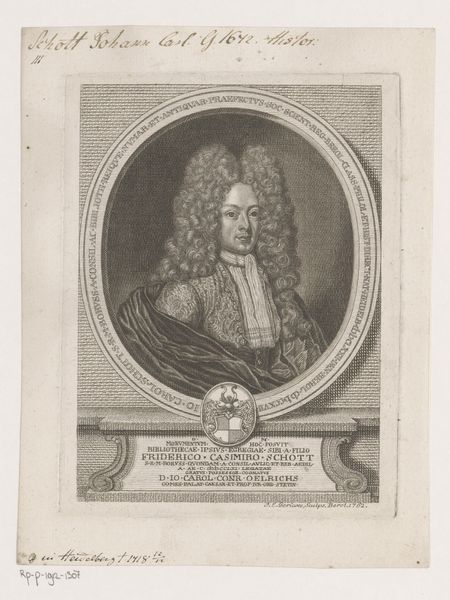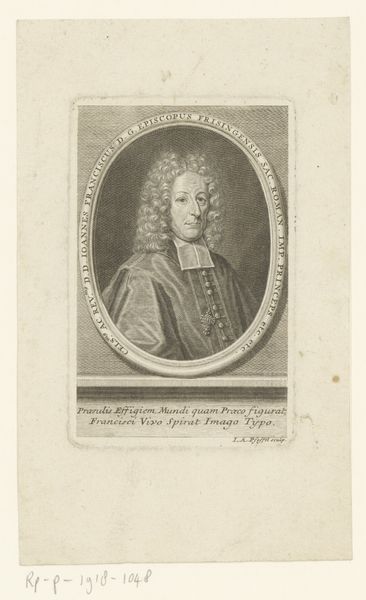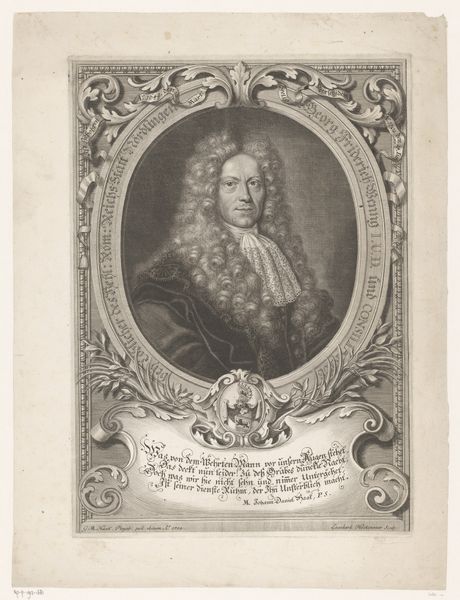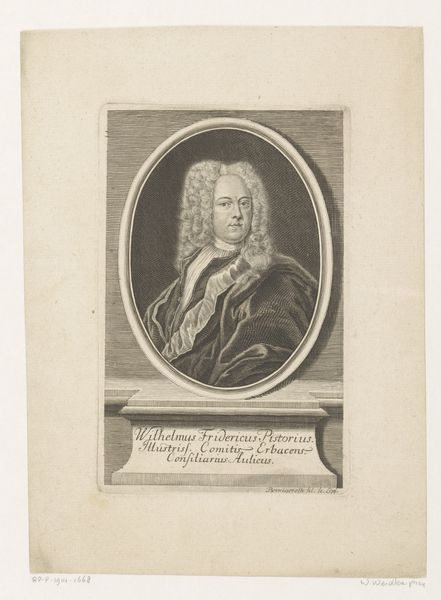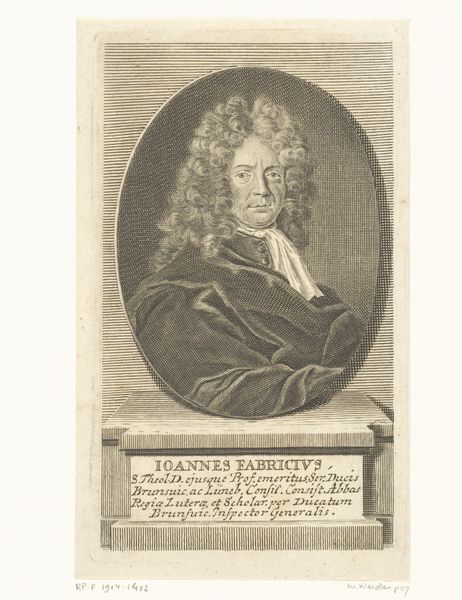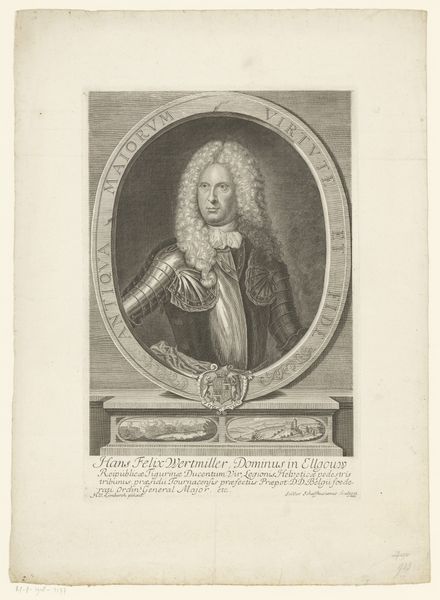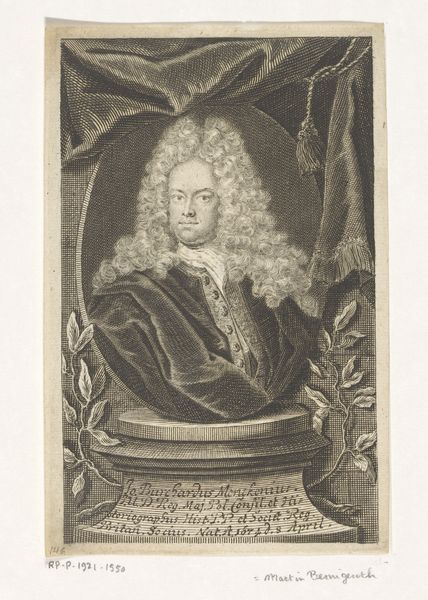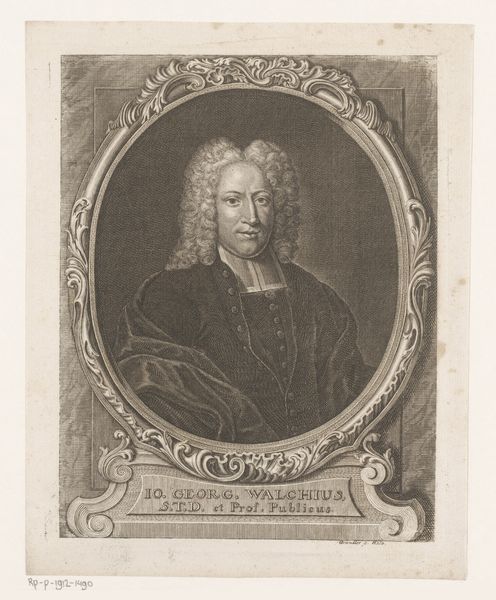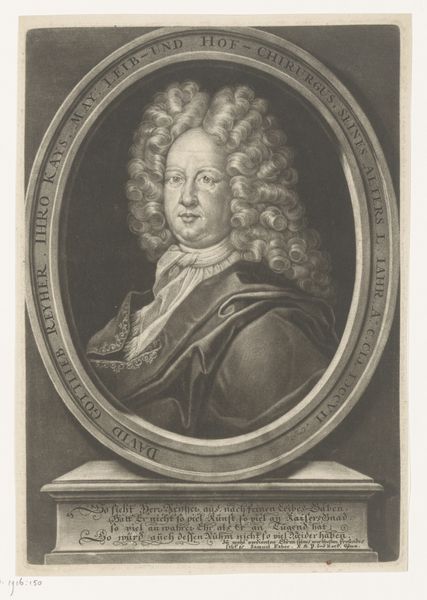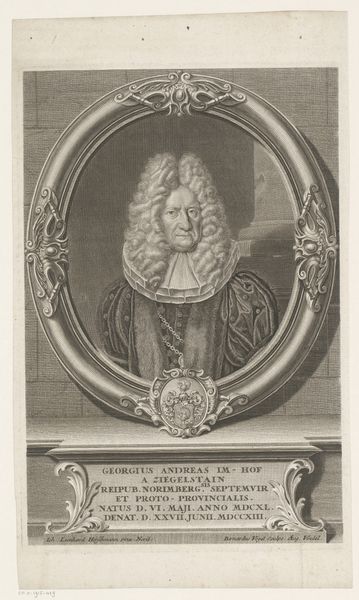
engraving
#
portrait
#
baroque
#
old engraving style
#
archive photography
#
historical photography
#
history-painting
#
engraving
Dimensions: height 327 mm, width 208 mm
Copyright: Rijks Museum: Open Domain
Editor: Here we have a baroque engraving titled "Portret van Johann Andreas Danz," created sometime between 1727 and 1733 by Martin Bernigeroth. The detail achieved with what I assume are simple tools is quite amazing! What aspects of this portrait grab your attention? Curator: The method of production itself is really the key here. Consider the engraver, Bernigeroth, and his role in reproducing and disseminating images of power. Engraving allowed for multiples; each print, an act of labor. The sitter, Johann Andreas Danz, a doctor, is framed by sumptuous drapery, and below the image is a text. The entire print acts as both representation and material object, both promoting Danz through the skills of the engraver and existing as an article of consumption for circulation within particular social spheres. Editor: So the value lies less in the artistry and more in the act of reproduction and its societal impact? Curator: Precisely! Look closely: how is status conveyed through these material means? Consider the paper itself, the ink used, the precision of the lines achieved by the engraver's hand, and also the choices related to image making such as drapery or fonts to include within the printing itself, all contribute to the subject's status as someone to be known and to take seriously, distributed through the act of image reproduction and therefore part of its broader distribution of images for scholarly pursuits. Editor: It's fascinating to think of art production as a form of labor, influencing society through accessibility. Curator: Exactly! Considering the material processes unveils hidden power dynamics. That labor is at once invisible, yet crucial in upholding Danz’s reputation as scholarly and important.
Comments
No comments
Be the first to comment and join the conversation on the ultimate creative platform.
